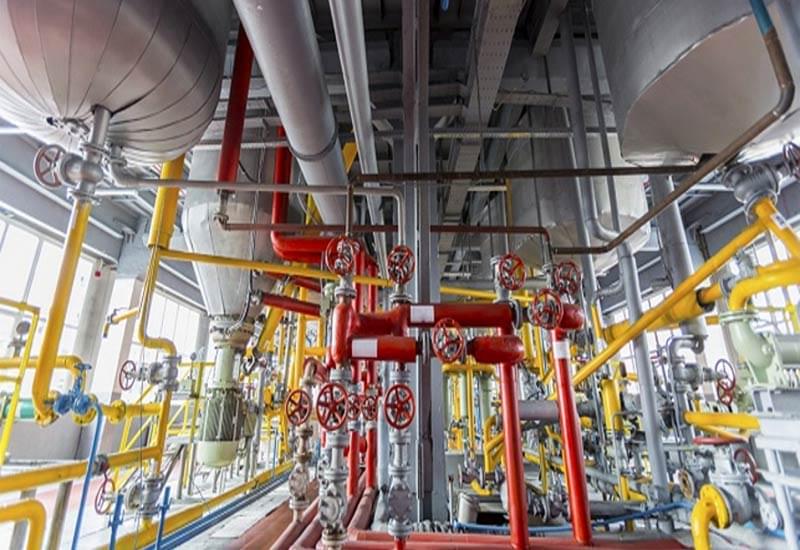Market Report
The Future of High-Performance Polymers for Oil and Gas

A new generation of high grade polyamides, polyamides and polyaryletherketones, offering different solutions for an industry traditionally wedded to metal parts. The advantages of metals, like steel, are well known, as are their drawbacks. Several of these, such as susceptibility to corrosion, are highlighted in the harsh operating and environmental conditions found in pipelines and on-shore and off-shore petrochemicals facilities.
In researching its report, The Future of High-Performance Polymers for Oil and Gas to 2020, Smithers has identified new opportunities for improved plastics to rival and surpass metal in several key applications.
The report estimates global demand for high performance polymers in oil and gas applications in 2015 was 17,340 tonnes, with a material value of US$430 million. Growth has been steady in recent years and looks to increase healthily to 5.6% per annum in 2018–2021.
One of the principle advantages high performance polymers provide for oil and gas applications are their corrosion resistance.
There are vast reserves of energy in deep water reservoirs, and these account for more than 50% of all new discoveries between 2010– 2014. As the industry is forced to drill deeper, extremes of operating temperature and pressure – up to 315°C and 3,000 bars – can be encountered. When combined with aggressive elements, such as hydrogen sulphide (H2S) and carbon dioxide (CO2), and aggressive completion and intervention fluids, these are causing major corrosion problems to steel pipes and other metallic components.
Failures along any part of an offshore or onshore system can often lead to a shutdown of production, which is hugely expensive. Furthermore, in extreme cases, leakages can lead to environmental damage and, as in the case of BP’s Deepwater Horizon, this leads to severe sanctions from governments.
The oil and gas industry is gaining familiarity with the business case – improved uptime, long life times and reduced maintenance cycles – high performance polymers can offer in replacing steel and other metal components.
Key applications are:
This scenario presents a major opportunity for suppliers of high performance polymers. High performance materials can make a valuable contribution towards addressing the problems of metal corrosion which are accentuated as environments become more hostile with extremes of temperature and pressure. Most of the materials profiled in the Smithers report have excellent resistance to these corrosive elements and/or a range of mechanical and electrical properties that make them a viable alternative to corrosion-resistant grades of stainless steel many applications.
This aligns with the wider petrochemical industry focus on increasing the lifetime of assets associated with recovery, production and processing by providing corrosion-resistant materials. Industry estimates suggest that at least 80% of oil and gas industry products are still metallic and that the impetus for change is sluggish, despite the growing awareness of corrosion resistant alternatives.
In an industry that is schooled in the tradition of steel products, one major contribution that the polymer industry is making is in the area of corrosion-resistant coatings. Steel is vulnerable to both internal and external corrosion and requires regular inspection and treatment with corrosion inhibitors. Alternatively, corrosion resistant alloys can be specified, but these are often more expensive than lining a carbon steel product with a corrosion resistant polymer.
Linings are commonly applied to pipes tanks and vessels to extend their service life and to avoid leakages that might be environmentally hazardous. In the case of pipelines, internal coatings not only provide greater protection from attack by aggressive elements, but they can also create a smooth bore which ensures the efficiency of the flow is maintained. This in turn helps to reduce pumping costs.
Tanks linings are very specific to the medium being stored. This might be salt water, oil, drilling mud, chemicals, potable water and sewage. The requirements may be resistance to specific chemicals or to abrasion.
A variety of polymeric materials are in use for linings, the most common being thermosets such as epoxy and polyurethane. Epoxy resins have a good range of chemical resistance and adhere well to most substrates. Polyethylene (PE) and polyamide are also used but are limited in temperature resistance to around 75°C. PE also does not adhere well – so needs multiple coats – and it is vulnerable to penetration by sharp objects.
Several high performance polymers are used for coatings but only in low market volumes. They offer excellent levels of resistance aggressive chemicals and can cope with higher temperatures than most bulk lining polymers.
In the short term, with the barrel price of Brent crude falling below $35 at the beginning of 2016 – following the remittance of Iran to the world market – the industry’s focus is on economy and existing assets. As and when the price of oil increases, firms will look to invest in new equipment, particularly for those marginal extraction facilities in areas that pose the greatest performance demands. These will provide a forum for demonstrating the corrosion-resistance advantages of this new generation of high-grade polymer components and linings and expand beyond their current niche applications.
This trend is reflected in the Smithers data with a 5.6% year-on-year increase in the market for high performance polymers forecast to begin in 2018 through to 2021.
For full analysis and comprehensive market data on the huge potential high performance polymers have in the oil and gas sector, see the Smithers global market study, The Future of High-Performance Polymers for Oil and Gas Markets to 2020.